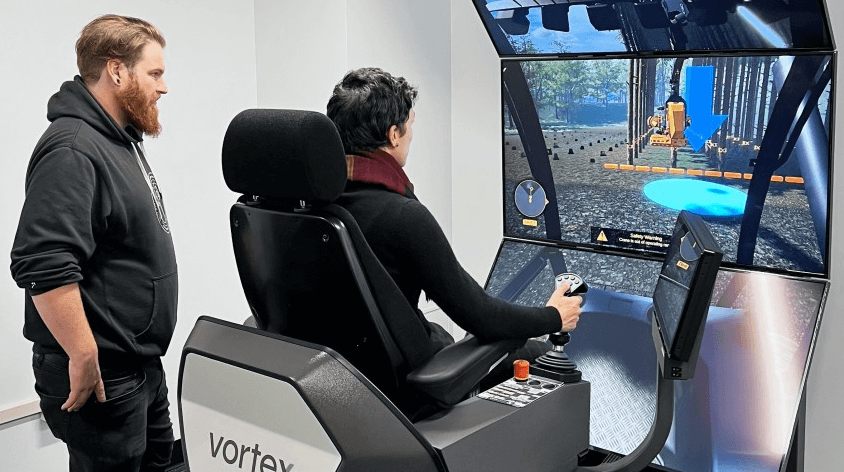It’s the undeniable wave of the future for forestry companies seeking long-term sustainability in an industry that has come to a high-tech crossroads that will reshape how our forests are managed and utilised, says Dominik Roeser, a UBC forest resources management Associate Professor, speaking at the British Columbia Council of Forest Industries convention.
“Rapid advances in remote sensing technology to map, monitor and manage valuable landscape resources are changing how forest health and wildlife activity is measured and the use of remotely-operated robotic harvesting equipment is gaining a foothold in interior forests,” Roester says.
“Companies are utilising new tools to meet goals in environmental stewardship, safety and efficiency.”
Roester says the ability to operate a crane remotely to load a logging truck means the operator can avoid adverse weather conditions and work safely, day or night.
“However, advances in 5G networks have increased connectivity speed to the point at which real-time virtual control is possible for machine operators using cameras mounted on machines to work wirelessly in the woods,” he said.
“We all know forestry is a dangerous business and working around safety and getting people off steep slopes – remote control machines will now allow that.
“In the future, you could probably operate your forest machine from your living room, from containers sitting at the top of the hillside, and you’re getting away from this by-yourself operation in the dark to a more communal operation of equipment.”
Machine automation is already being utilised on modern forest machines and Roeser says it’s only a matter of time before there is broad adoption of fully automated equipment in Canadian forests.
Since the 1950s, the number of human hours it takes to harvest trees has declined almost every year due to advances in mechanical equipment that made harvesting operations more efficient.
But that curve has flattened or declined every year since the early 2000s, which Roeser says reflects societal demands for more stringent environmental regulations that have impacted logging activities.
The evolution of new technologies combined with digitisation gives the forest sector hope that trend will be reversed.
Advances as simple as a mobile phone app that instantly determines the volume of a loaded logging truck is an example of supply-chain tracking tools that could save costs for British Columbia companies with long distances to overcome.
“This has been standard on cut-to-length operations for 15 years in Nordic countries and we’re starting this now, and that’s where we should take a step back and think about a lost opportunity,” Roeser adds.
“I think one of the challenges is because we always had so much wood we never had to be super-efficient. In Europe, everything is more scarce and you learn to deal with that scarcity by getting real good and very efficient.”
Technology is already radically changing how forests are mapped. The BC government is undertaking a project to map the entire province using LiDAR (light detection and ranging) and its lasers to accurately map inaccessible areas to help professionals manage for a range of values across the entire landscape.
Trade schools are using simulators and video screens to train operators inexpensively without the inherent risks of turning loose inexperienced students at the controls of heavy machinery. The simulators provide live feedback to show what they need to improve to maximise efficiency.
The UBC Forest Science Centre recently became home to the first global state-of-the-art Forestry Trimble Technology Lab, which will give students access to the most innovative software and hardware tools available to the forest industry to be used for teaching and research.
Just as the health sector is being transformed with remote interactions between patients and healthcare professionals and doctors and nurses using real-time connections to perform remote procedures such as ultra-sound exams. Roeser says the forest sector also benefits from advanced diagnostics for such purposes as repairing machinery or maintaining equipment.
He says electrification is coming; It’s already happening in places like Finland, where hybrid electric harvesters are being used, while in Austria and Germany, cable yarders use electric carriages to power electric engines.
Electric trucking fleets with interchangeable batteries are also coming to help companies achieve fuel savings and meet emission targets.
But Dominik Roeser says forest growers will still have to overcome the challenges of large distances and remote work sites.
- Extracts from an article published by Ted Clarke for Glacier Media







